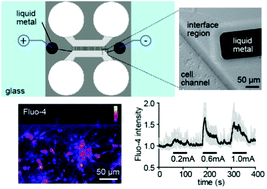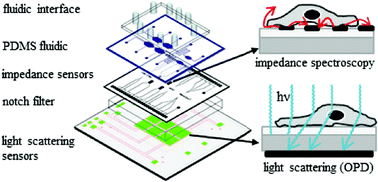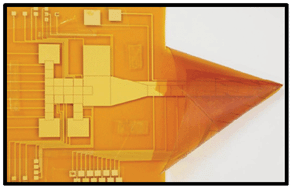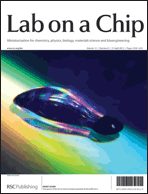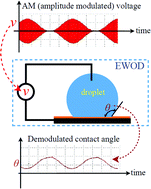This month sees the following articles in Lab on a Chip that are in the top ten most accessed:-
Smart Polymeric Microfluidics Fabricated by Plasma Processing: Controlled Wetting, Capillary Filling, Hydrophobic Valving
Katerina Tsougeni, Dimitris Papageorgiou, Angeliki Tserepi and Evangelos Gogolides
Lab Chip, 2010, 10, 462-469
DOI: 10.1039/B916566E
Probing circulating tumor cells in microfluidics
Peng Li, Zackary S. Stratton, Ming Dao, Jerome Ritz and Tony Jun Huang
Lab Chip, 2013, 13, 602-609
DOI: 10.1039/C2LC90148J
A polymer-based neural microimplant for optogenetic applications: design and first in vivo study
Birthe Rubehn, Steffen B. E. Wolff, Philip Tovote, Andreas Lüthi and Thomas Stieglitz
Lab Chip, 2013, 13, 579-588
DOI: 10.1039/C2LC40874K
Pen microfluidics: rapid desktop manufacturing of sealed thermoplastic microchannels
Omid Rahmanian and Don L. DeVoe
Lab Chip, 2013, 13, 1102-1108
DOI: 10.1039/C2LC41057E
Fundamentals of Inertial Focusing of Microparticles in a Rectangular Microchannel
Jian Zhou and Ian Papautsky
Lab Chip, 2013, 13, 1121-1132
DOI: 10.1039/C2LC41248A
Advances in Microfluidics-based Experimental Methods for Neuroscience Research
Jae Woo Park, Hyung Joon Kim, Myeong Woo Kang and Noo Li Jeon
Lab Chip, 2013, 13, 509-521
DOI: 10.1039/C2LC41081H
Adhesive-based bonding technique for PDMS microfluidic devices
C. Shea Thompson and Adam R. Abate
Lab Chip, 2013, 13, 632-635
DOI: 10.1039/C2LC40978J
Engineered cell culture substrates for axon guidance studies: moving beyond proof of concept
Joannie Roy, Timothy E. Kennedy and Santiago Costantino
Lab Chip, 2013, 13, 498-508
DOI: 10.1039/C2LC41002H
Label-Free DC Impedance-based Microcytometer for Circulating Rare Cancer Cell Counting
Hyoungseon Choi, Kwang Bok Kim, Chang Su Jeon, Inseong Hwang, Saram Lee, Hark Kyun Kim, Hee Chan Kim and Taek Dong Chung
Lab Chip, 2013, 13, 970-977
DOI: 10.1039/C2LC41376K
Microfluidic chemostat for measuring single cell dynamics in bacteria
Zhicheng Long, Eileen Nugent, Avelino Javer, Pietro Cicuta, Bianca Sclavi, Marco Cosentino Lagomarsino and Kevin D. Dorfman
Lab Chip, 2013, 13, 947-954
DOI: 10.1039/C2LC41196B
Why not take a look at the articles today and blog your thoughts and comments below.
Fancy submitting an article to Lab on a Chip? Then why not submit to us today or alternatively email us your suggestions.











 Tony Huang
Tony Huang

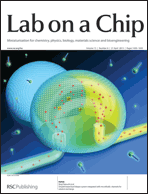
 The back cover features the laboratory of Sergey Shevkoplyas at
The back cover features the laboratory of Sergey Shevkoplyas at 